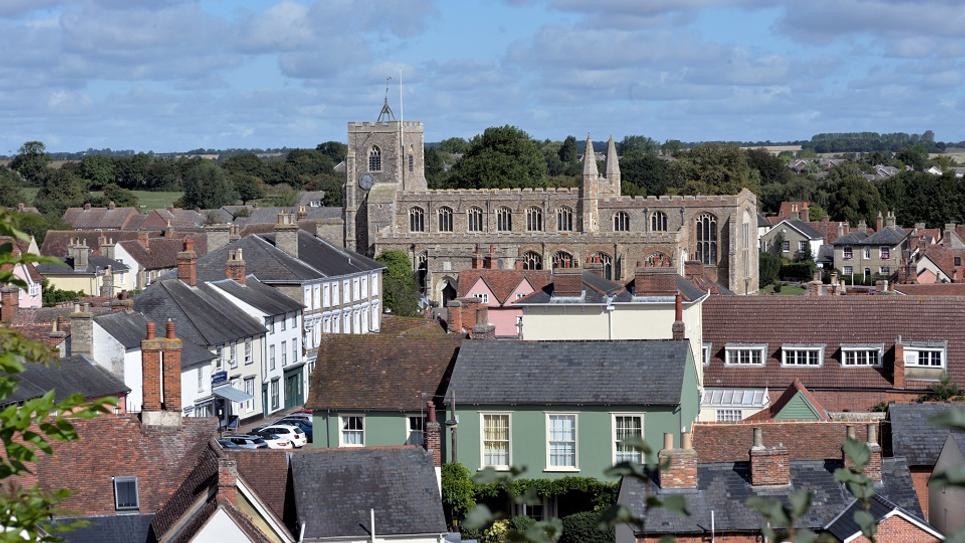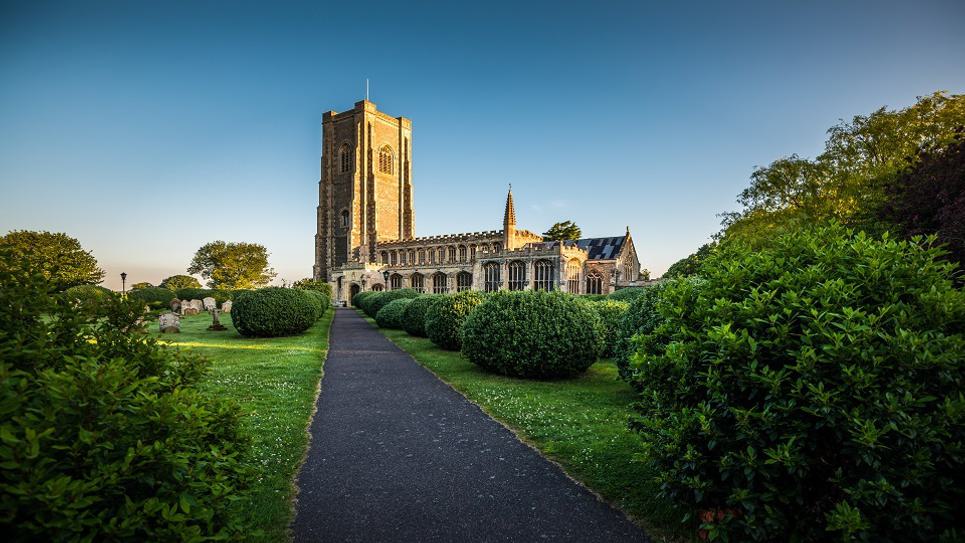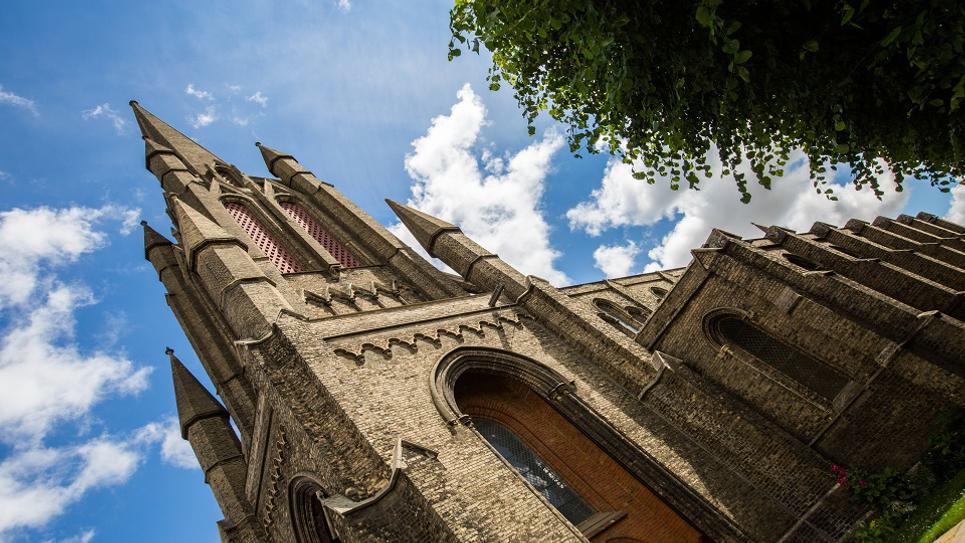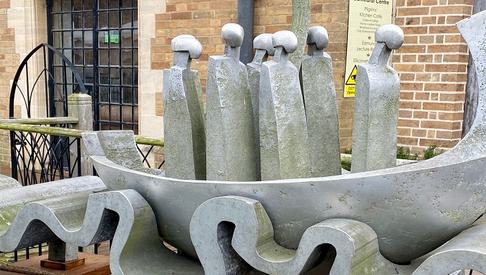
Back to Blogs
Discover
Explore Historic Churches
Housing centuries of history, explore the churches in Bury St Edmunds and Beyond and discover Suffolk's fascinating past...
St Mary's Church, Bury St Edmunds

Part of Bury St Edmunds Abbey, St Mary's Church is one of the largest parish churches in England, claiming to have the second longest aisle, and the largest West Window of any parish church in the country. It is renowned for its magnificent hammer-beam Angel roof and its wealth of 15th century woodcarvings and outstanding examples of stained glass.
It was originally was one of three large churches in the town (the others being St James, now St Edmundsbury Cathedral, and St Margaret's which no longer exists). The first building to stand on the site was built in the 12th century, in the 14th and 16th centuries there was a major renovation with the nave, tower and ailes being built. It was during this time that Mary Tudor Queen of France and sister of Henry VIII died, and so was buried in the church. Her tomb is located in the sanctuary next to the north of the Lord's table.
In the 16th century, two wealthy local benefactors, died and left large amounts of money to the church which were used to build the north and south ailes, two chantry chapels and a north and south porch (later removed) with St Wolstan's Chapel being added in the 1830s.
The church is open Monday to Saturday from 10am to 4pm (3pm in the winter). Admission is free.
St Peter & St Paul, Clare

Ranked as one of England's Thousand Best churches, St Peter and St Paul in Clare is a stunning example of medieval Gothic architecture.
The church is large, and was built sometime after the Norman conquest, but the nave and chancel are later, 15th century, rebuildings. The nave arcading is 13th century, as is the west tower. The beautifully carved south porch dates to about 1380, as does the chapel.
Bits of a 15th-century rood screen remain, but only remnants of original stained glass remain; the rest was destroyed in 1643.
The church is open for visitors every day and there is a well-stocked shop and bookstall.
Icklingham All Saints
The church in Icklingham dates back to Norman times was mostly 14th century, along with many other churches in the region. It has not been used as a parish church for over 100 years, and so it remains one of the best examples of a relatively untouched Suffolk church, showcasing local craftsmanship in local materials.
All Saints is no longer used as a place of worship but occasionally holds events and is open daily for visitors to explore from 10am to 4pm.
St Peters and St Paul's Church, Lavenham

St Peter and St Paul's Church is a Grade I listed parish church in the wool town of Lavenham. Regarded as the finest example of Late Perpendicular Gothic architecture in England, it has (in some form) existed on the current site since Anglo-Saxon times.
The original church, would most likely have been made of wood, was rebuilt in stone in the 14th century. The chancel is the oldest part of the current church, having been constructed in c. 1340 and decorated with money from wealthy citizens.
In the decades following the Black Death the town of Lavenham grew rich as a result of the booming wool trade. The 14th-century church was added to and modified several times in order to convey the new wealth of its religious community. The eastern vestry, built in 1440, is the only other remaining part of the previous church building. The Earl of Oxford suggested rebuilding the church in 1485 to celebrate the new King, Henry VIII, with reconstruction being completed around 1525.
The reconstruction of the church took place mainly between 1485 and 1525, the cost of the work was paid for by the local merchant families, who had become amongst the wealthiest in England. The same families continued to pay for the upkeep of the building, in some cases for centuries after its completion.
The Church is open daily from 8.30am to 6.00pm but visiting may be restricted during church services and other events.
St Mary, Mildenhall
One of England's finest churches, St Mary is an imposing building with a tower soaring 40-metres over the Breckland town of Mildenhall.
A church has stood here for almost 1,000 years but the church you see today dates back to the early 13th century. The church was re-built in the 15th century thanks to the lucrative wool-trade in the area, with Barnack stone used for the lofty arcades brought by barge across the Fens from Peterborough.
St Mary contains the altar tomb of Henry Barton, Lord Mayor of London from 1416 and 1428 (although he is actually buried in St Paul’s Cathedral) and the font bears his coat of arms. (The legendary Dick Whittington being Lord Mayor before!).
The church is open daily from 9am to 5pm in summer and 9am to 3.30pm in winter.
Holy Trinity Church, Long Melford

The Grade I listed parish church in Long Melford is one of 310 medieval English churches dedicated to the Holy Trinity. It was constructed between 1467 and 1497 in the late Perpendicular Gothic style; The church structure is highly regarded by many observers. Its cathedral-like proportions and distinctive style, along with its many original features that survived the religious upheavals of the 16th and 17th centuries, have attracted critical acclaim.
Journalist and author Sir Simon Jenkins, Chairman of the National Trust, included the church in his 1999 book “England’s Thousand Best Churches”. He awarded it a maximum of 5 stars, one of only 18 to be so rated. The Holy Trinity Church was also featured in many episodes of Michael Wood's BBC television history series Great British Story, filmed during 2011.
St John the Evangelist, Bury St Edmunds

An iconic Victorian Gothic Church, St John the Evangelist in Bury St Edmunds has a 170 ft spire and was dedicated in 1841. Built of white bricks produced at nearby Woolpit, it was the first major building to go up as Bury St Edmunds spread northwards. It met the needs of a town that was expanding with the building of the gasworks in 1834 and the construction of the railway which linked the town to Ipswich in 1846 and Cambridge in 1854.
Endowed by the Marquis of Bristol, the church was built by William Ranger of Brighton who invented an artificial stone known as ‘Ranger’s Artificial Stone’. The magnificent tower was struck by lightning in 1871 and rebuilt a year later. At the corners of each stage are turrets with conical spires.
The church is beautifully maintained and presented – a calming space in a busy world where visitors can have time to think, or to wander and reflect on the devotional images, including a dramatic set of Stations of the Cross by the distinguished British artist Iain McKillop.
The church is open daily from 9am to 5pm.
Related Posts
Related Blogs

News
Tours Take Off for Masters of…
Tours developed by Bury St Edmunds Tour Guides and…

News
Vote for Bury St Edmunds Tour…
Vote now to Help Bury St Edmunds Tour Guides win the…

News
See Rendlesham Revealed at…
1,400-year-old Anglo-Saxon artefacts from National…

News
New afternoon tea at Lavenham…
Enjoy a Masters of the Air themed afternoon tea at The…

News
Itinerary: Masters of the Air
Follow in the footsteps of the Master of the Air
Latest news

News
Discover Suffolk's County Flower - the Oxlip
Did you know that Suffolk has a county flower? The Oxlip only grows in some woodland areas of Suffolk, Cambridgeshire and Essex.

News
Quentin Blake ‘The Illustrated Hospital’ exhibition at Bury St Edmunds Museum
A summer exhibition of illustrations by Quentin Blake at Moyse’s Hall Museum, Bury St Edmunds presents a rare opportunity to view a large collection of pieces by one of the nation’s favourite artists.

News
Abbey Project Awarded National Lottery Heritage Fund Grant
The project aims to conserve and protect the ruins; build a visitor centre, west cloister, and network of footpaths; and use digital technology to provide exciting interpretation for all ages and…

News
Walks at Rougham
Rougham Estate offers 18 miles of public footpaths, cycling routes and permissive pathways for you to enjoy.

News
Bury St Edmunds Celebrates English Tourism Week
Bury St Edmunds MP, Jo Churchill, met representatives from the town’s attractions and tour guides involved with the town’s Masters of the Air tourism campaign at Bury St Edmunds Guildhall.

News
Tours Take Off for Masters of The Air
Tours developed by Bury St Edmunds Tour Guides and Bury St Edmunds Guildhall to tie in with the Apple TV Series Masters of The Air so popular more dates are being added.

News
International illustrator David Hughes draws largest exhibition Bury St Edmunds
The largest ever exhibition is now underway at Moyse’s Hall Museum featuring the work of internationally acclaimed illustrator David Hughes.

News
A Taste of Bury St Edmunds and Suffolk
After visiting Suffolk's foodie capital, you'll want to take it with you - here are 5 foodie treats to take home!

News
Doctor Who Stars Coming to Bury St Edmunds to Star in Sherlock Holmes Classic
Who stars Colin Baker, Terry Molloy, and Rosie Baker will star in Hound of The Baskervilles at Bury St Edmunds Theatre Royal



